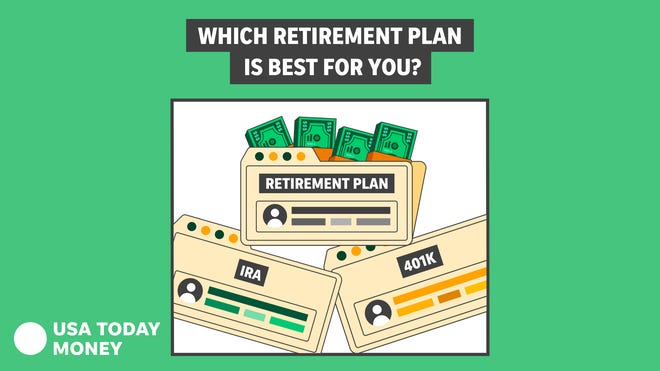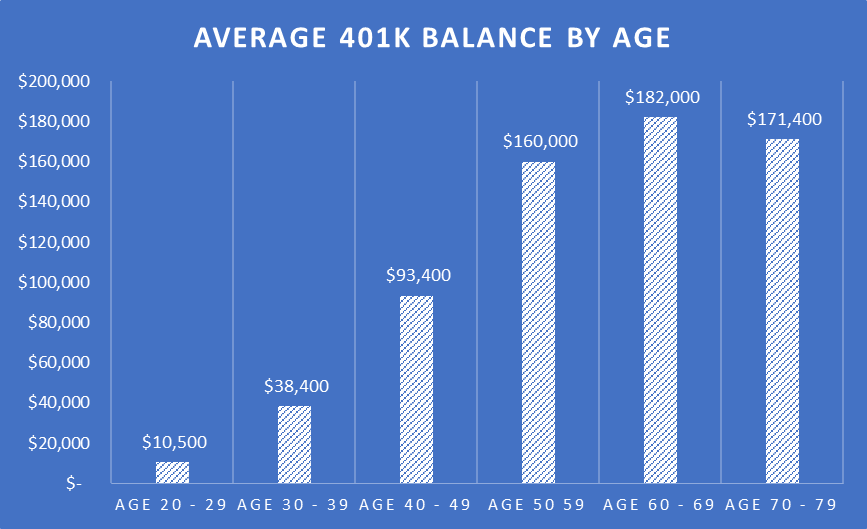
Perhaps you're wondering how to figure out what an average retirement nest is. While the average nest egg is $1million, this number can vary greatly depending on your situation. Consider inflation and healthcare costs. Inflation could reduce the value your nest egg, making retirement less comfortable. If you have a nest egg larger than $1 million, it may not be enough to sustain your retirement. It is best to choose a benchmark closer to yours to determine if your nest egg will last the years of retirement.
70 percent of pre-retirement income
There are no set rules. However, financial planners recommend you save between 70 and 80 percent from your pre-retirement earnings to allow for a comfortable retirement. This includes transportation costs, clothing, lunches out, and the cost of working clothes. This should also take into account inflation and tax consequences. Consider this: If you retire at 65 with $200,000 in savings, you will still need to have approximately 70% of your preretirement income.

$40,000 per annum
For those who have saved for their retirement, a common rule of thumb is to withdraw 4% of your retirement savings each year, or approximately $40,000 per year, in the first year. That means you could withdraw $40,000 in a lump sum or in a series of payments. In subsequent years, you would withdraw another 4% of your nest egg, allowing you to keep track of your expenses and adjust your withdrawals accordingly.
$1 million ideal retirement nest egg
An ideal retirement nest fund of $1 million may be the right amount for you if your retirement age is approaching. This amount of money is large enough for you to have a comfortable life in your golden years, as well as a stable retirement pension and a generous inheritance. But how do you decide how to allocate your retirement savings? What risk are your willing to take? How about inflation? Inflation is a negative reality that could cause you to lose your nest eggs in the near future.
401(k) plan balance
The amount of money people have saved in their 401(k) plans has increased significantly since the beginning of the recession. Fidelity's recent report shows that while the average 401k plan account balance is $129.157, more than half of it has been lost by women. This difference in balances can be explained by the fact that women generally live longer and will need more money to fund their retirement. Also, women are more likely to need long-term health care than men. This means that they will need more money in retirement for their 401(k).

Hawaii most expensive state for retirees
Hawaii is among the most expensive places to retire due to the high cost for consumer goods and nursing homes. The costs will likely outweigh those in the retired's home state. You should avoid the top one per cent to retire in Hawaii. Retirement in Hawaii involves investing in the stockmarket, building retirement savings, and engaging in entrepreneurial ventures.
FAQ
Where can you start your search to find a wealth management company?
When searching for a wealth management service, look for one that meets the following criteria:
-
Reputation for excellence
-
Is the company based locally
-
Free consultations
-
Provides ongoing support
-
Clear fee structure
-
A good reputation
-
It is simple to contact
-
Support available 24/7
-
Offers a variety products
-
Charges low fees
-
There are no hidden fees
-
Doesn't require large upfront deposits
-
Make sure you have a clear plan in place for your finances
-
Transparent approach to managing money
-
This makes it easy to ask questions
-
Have a good understanding of your current situation
-
Understand your goals and objectives
-
Are you open to working with you frequently?
-
Works within your budget
-
Does a thorough understanding of local markets
-
We are willing to offer our advice and suggestions on how to improve your portfolio.
-
Is ready to help you set realistic goals
What is investment risk management?
Risk management is the art of managing risks through the assessment and mitigation of potential losses. It involves identifying and monitoring, monitoring, controlling, and reporting on risks.
Risk management is an integral part of any investment strategy. The goal of risk-management is to minimize the possibility of loss and maximize the return on investment.
These are the key components of risk management
-
Identifying risk sources
-
Monitoring the risk and measuring it
-
How to reduce the risk
-
Manage your risk
Which are the best strategies for building wealth?
It is essential to create an environment that allows you to succeed. You don’t want to have the responsibility of going out and finding the money. If you aren't careful, you will spend your time searching for ways to make more money than creating wealth.
Avoiding debt is another important goal. It is tempting to borrow, but you must repay your debts as soon as possible.
You're setting yourself up to fail if you don't have enough money for your daily living expenses. If you fail, there will be nothing left to save for retirement.
Before you begin saving money, ensure that you have enough money to support your family.
Statistics
- These rates generally reside somewhere around 1% of AUM annually, though rates usually drop as you invest more with the firm. (yahoo.com)
- A recent survey of financial advisors finds the median advisory fee (up to $1 million AUM) is just around 1%.1 (investopedia.com)
- According to a 2017 study, the average rate of return for real estate over a roughly 150-year period was around eight percent. (fortunebuilders.com)
- Newer, fully-automated Roboadvisor platforms intended as wealth management tools for ordinary individuals often charge far less than 1% per year of AUM and come with low minimum account balances to get started. (investopedia.com)
External Links
How To
How to Invest Your Savings to Make Money
You can make a profit by investing your savings in various investments, including stock market, mutual funds bonds, bonds and real estate. This is called investing. You should understand that investing does NOT guarantee a profit, but increases your chances to earn profits. There are various ways to invest your savings. You can invest your savings in stocks, mutual funds, gold, commodities, real estate, bonds, stock, ETFs, or other exchange traded funds. These methods are described below:
Stock Market
Because you can buy shares of companies that offer products or services similar to your own, the stock market is a popular way to invest your savings. Buying stocks also offers diversification which helps protect against financial loss. In the event that oil prices fall dramatically, you may be able to sell shares in your energy company and purchase shares in a company making something else.
Mutual Fund
A mutual fund refers to a group of individuals or institutions that invest in securities. They are professional managed pools of equity or debt securities, or hybrid securities. A mutual fund's investment objectives are often determined by the board of directors.
Gold
It has been proven to hold its value for long periods of time and can be used as a safety haven in times of economic uncertainty. Some countries use it as their currency. In recent years, gold prices have risen significantly due to increased demand from investors seeking shelter from inflation. The price of gold tends to rise and fall based on supply and demand fundamentals.
Real Estate
Real estate includes land and buildings. You own all rights and property when you purchase real estate. Rent out a portion your house to make additional income. You can use your home as collateral for loan applications. The home may also be used to obtain tax benefits. Before buying any type property, it is important to consider the following things: location, condition and age.
Commodity
Commodities are raw materials like metals, grains, and agricultural goods. As these items increase in value, so make commodity-related investments. Investors who want the opportunity to profit from this trend should learn how to analyze charts, graphs, identify trends, determine the best entry points for their portfolios, and to interpret charts and graphs.
Bonds
BONDS ARE LOANS between companies and governments. A bond is a loan that both parties agree to repay at a specified date. In exchange for interest payments, the principal is paid back. Bond prices move up when interest rates go down and vice versa. An investor purchases a bond to earn income while the borrower pays back the principal.
Stocks
STOCKS INVOLVE SHARES in a corporation. A share represents a fractional ownership of a business. Shareholders are those who own 100 shares of XYZ Corp. When the company earns profit, you also get dividends. Dividends are cash distributions to shareholders.
ETFs
An Exchange Traded Fund or ETF is a security, which tracks an index that includes stocks, bonds and currencies as well as commodities and other asset types. ETFs can trade on public exchanges just like stock, unlike traditional mutual funds. The iShares Core S&P 500 Exchange Tradeable Fund (NYSEARCA : SPY) tracks the performance of Standard & Poor’s 500 Index. If you purchased shares of SPY, then your portfolio would reflect the S&P 500's performance.
Venture Capital
Ventures capital is private funding venture capitalists provide to help entrepreneurs start new businesses. Venture capitalists lend financing to startups that have little or no revenue, and who are also at high risk for failure. Usually, they invest in early-stage companies, such as those just starting out.